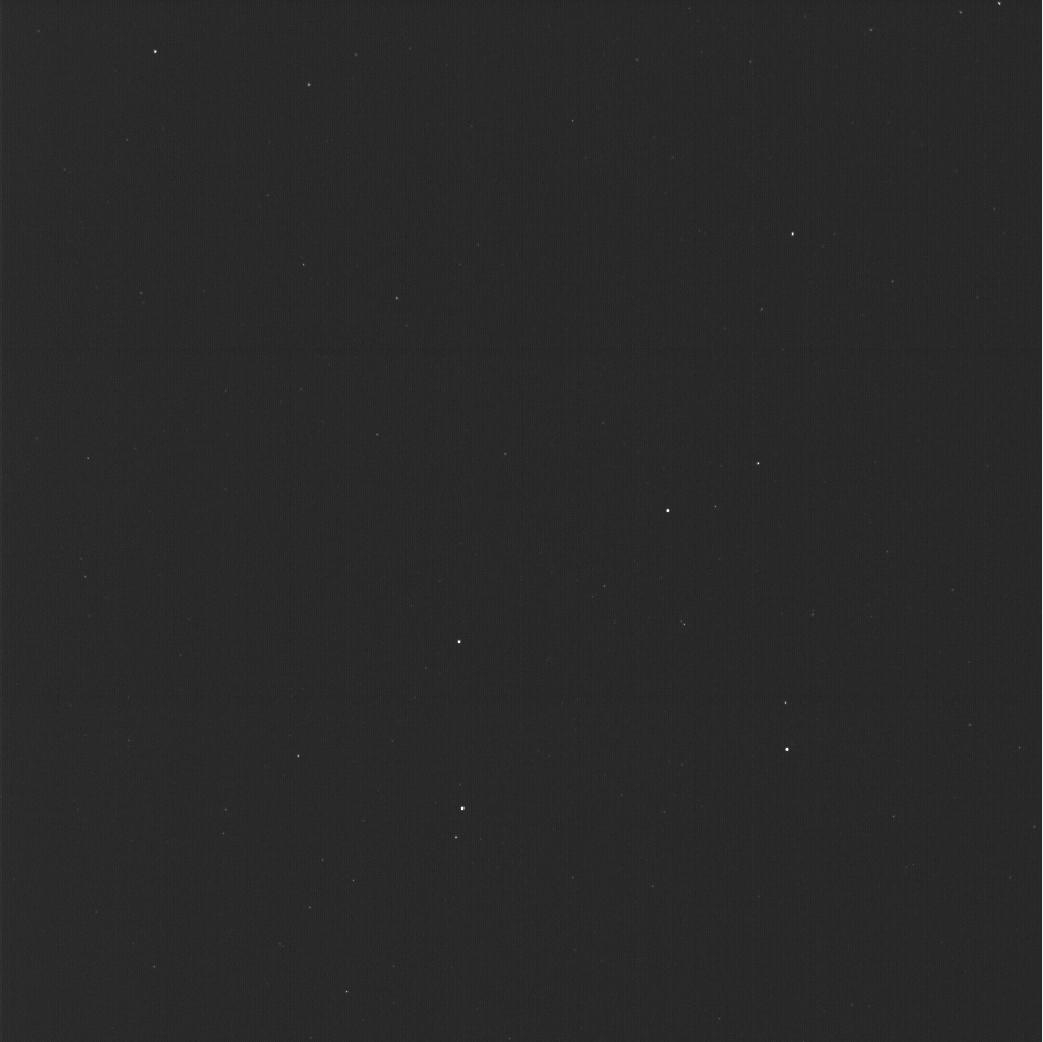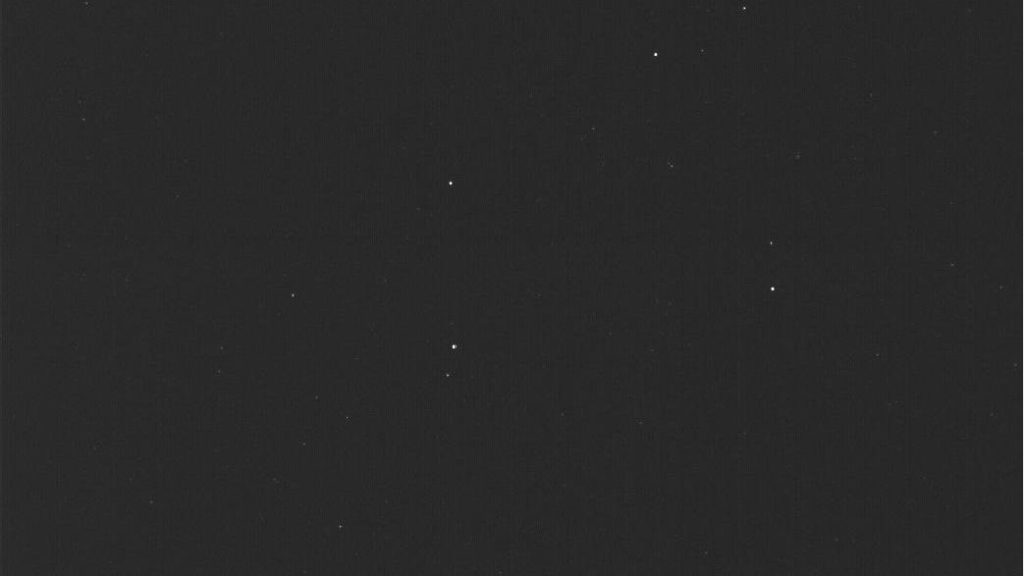This week, NASA released the first image from the Europa Clipper spacecraft’s voyage. The image is a mosaic of a star field, created from three shots the solar-powered orbiter captured in December of 2024, less than two months after it launched atop a SpaceX Falcon Heavy from the Kennedy Space Center in Florida.
Stars that lie between 150 to 300 light-years away appear in the mosaic as tiny dots of light, representing roughly 0.1% of the full sky that surrounds Europa Clipper. The four brightest stars visible in the image are Alchiba, Algorab, Gienah and Kraz from the Corvus constellation.
This image is associated with the spacecraft’s star map, which helps determine where it points. With such a map, the Europa Clipper will be able to orient itself for the long trek to Jupiter’s icy moon, Europa. As such, onboard are a pair of small cameras called star trackers, which capture the images for the ultimate star map mosaic.
“Without knowing the spacecraft’s exact orientation, it would be impossible to precisely point science instruments at Europa to collect data, or to accurately point the antenna toward Earth for communication,” Mana Salami, a Jet Propulsion Laboratory systems engineer who works in guidance and control for Europa Clipper, said in a 2022 mission update.
The star trackers — formally known as the stellar reference units — provide guidance by taking pictures of stars, and then comparing the pictures in a computer that contains a catalog of stars with known positions. This provides a frame of reference for Europa Clipper, so that it can adjust for the precise targeting needed to reach its destination, as well as transmit data back home to Earth.

One most ambitious spacecraft ever created, Europa Clipper is a solar-powered robotic orbiter tasked with a vital mission to find out if the distant moon in Jupiter’s orbit could possibly support life. To this end, the spacecraft’s three main science objectives are determining the thickness of Europa’s icy outer layer and how it interacts with the ocean below; investigating Europa’s composition; and characterizing the moon’s geology.
On its way to Jupiter’s orbit, Europa Clipper will visit Mars’ vicinity in March for a gravity assist, before it heads Earthward, and then eventually on a path to visit Europa. According to NASA, the orbiter will travel at least 1.8 billion miles (2.9 billion kilometers) before it reaches the Jovian system in April 2030.
Breaking space news, the latest updates on rocket launches, skywatching events and more!








